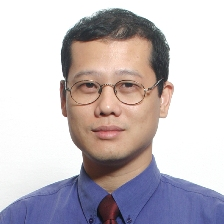Recent Advances of BioMEMS and Their Applications
A special issue of Micromachines (ISSN 2072-666X).
Deadline for manuscript submissions: closed (31 March 2017) | Viewed by 5600
Special Issue Editors
Interests: micro-sensor; optical MEMS; bio-MEMS; microfabrication
Interests: microfluidics; nanofluidics; micro/nanomachining technologies; micro/nanoscale science; instrumentation for biomedical applications
Special Issues, Collections and Topics in MDPI journals
Special Issue Information
Dear Colleagues,
The creation of revolutionary biotechnologies and significant progress of biotechnologies will be enabled by the fusion of groundwork technologies, such as electronics, fluidics, optics, sensors, and micro/nanotechnology. This Special Issue is intended to provide a forum for fostering communication among leading researchers, industry professionals, research students, and developers from various fields in the spirit of “biotechnology for applications” with a focus in emerging markets and applications and will also publish selected papers from the 6th Bio4Apps2016 conference (https://www.griffith.edu.au/conference/bio4apps2016), 14–16 December 2016, at the Griffith University of Australia. Topics range from fundamental research to its applications in biology, physics, chemistry, materials and medicine. It is worth noting that Micromachines is an international, peer-reviewed open access journal of the technology and science of micro-scale machines and micromachinery, indexed by Web of Science and EI, with a 2015 impact factor of 1.295. Potential topics include, but are not limited to:
- BioElectronics
- BioSensors
- MEMS/NEMS for biomedical applications
- Microfluidics for biomedical applications
- Biomedical signal processing
- BioMedical Devices
- Energy harvesting technology for biomedical applications
- Miniaturized diagnostic medical devices
- Physiological monitoring
- Bio-imaging technology
- Bio-compatible materials and packaging
- Surgical robots
Prof. Dr. Renshi Sawada
Prof. Dr. Nam-Trung Nguyen
Guest Editors
Manuscript Submission Information
Manuscripts should be submitted online at www.mdpi.com by registering and logging in to this website. Once you are registered, click here to go to the submission form. Manuscripts can be submitted until the deadline. All submissions that pass pre-check are peer-reviewed. Accepted papers will be published continuously in the journal (as soon as accepted) and will be listed together on the special issue website. Research articles, review articles as well as short communications are invited. For planned papers, a title and short abstract (about 100 words) can be sent to the Editorial Office for announcement on this website.
Submitted manuscripts should not have been published previously, nor be under consideration for publication elsewhere (except conference proceedings papers). All manuscripts are thoroughly refereed through a single-blind peer-review process. A guide for authors and other relevant information for submission of manuscripts is available on the Instructions for Authors page. Micromachines is an international peer-reviewed open access monthly journal published by MDPI.
Please visit the Instructions for Authors page before submitting a manuscript. The Article Processing Charge (APC) for publication in this open access journal is 2600 CHF (Swiss Francs). Submitted papers should be well formatted and use good English. Authors may use MDPI's English editing service prior to publication or during author revisions.
Keywords
- BioElectronics
- BioSensors
- MEMS/NEMS for biomedical applications
- Microfluidics for biomedical applications
- Biomedical signal processing
- BioMedical Devices
- Energy harvesting technology for biomedical applications
- Miniaturized diagnostic medical devices
- Physiological monitoring
- Bio-imaging technology
- Bio-compatible materials and packaging
- Surgical robots







